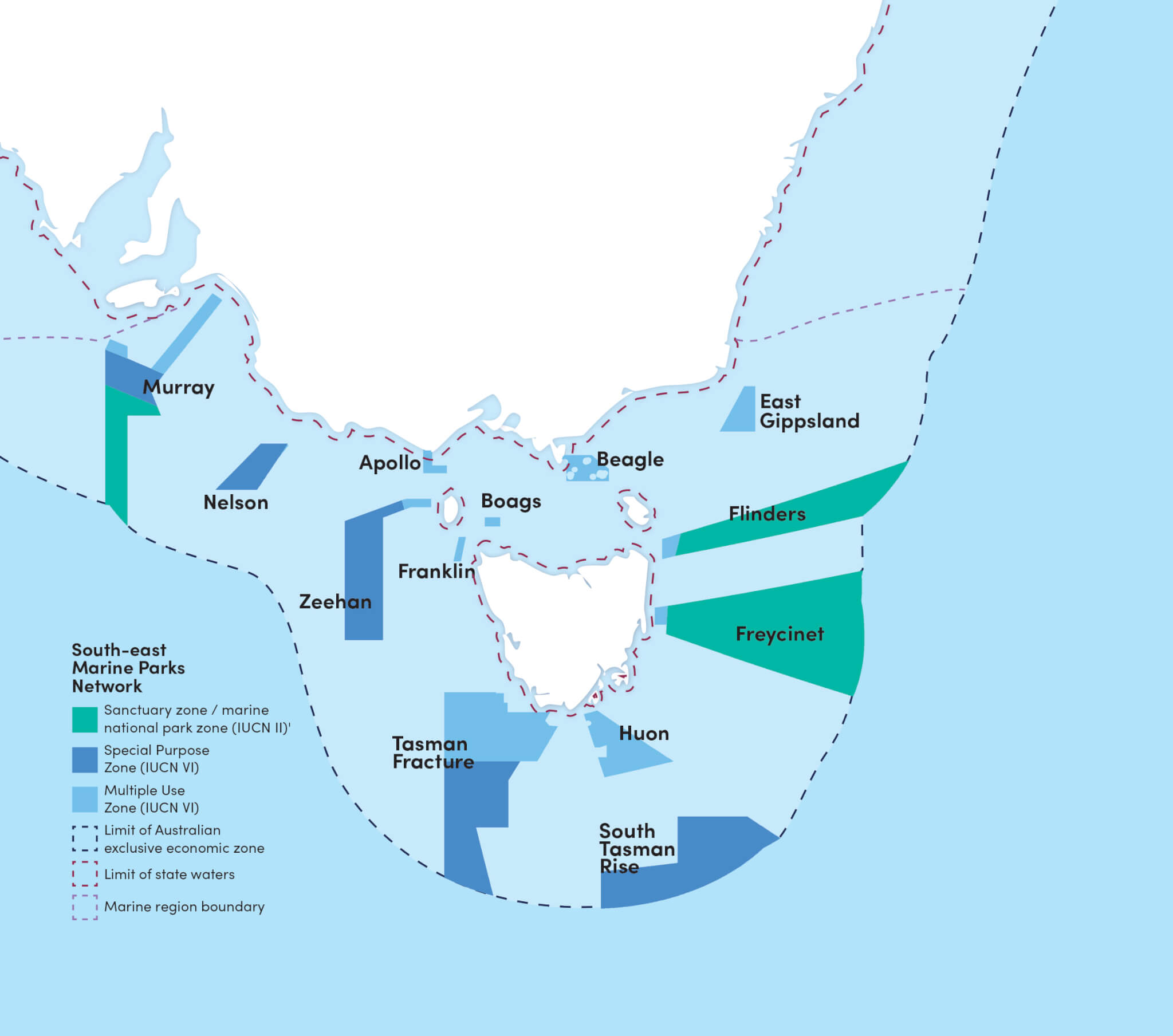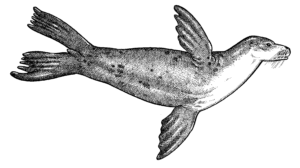The South East Marine Park Network
The network extends from the warm temperate waters around South Australia, Victoria and New South Wales, to the cool temperate waters around Tasmania. This network of Commonwealth marine parks comprises 14 marine parks, covering more than 226,000 km2.

Established in 2007, the marine park network is well overdue for renewal. Our understanding of the incredible values and growing threats to the region have changed markedly. We now know the marine park network falls well short of what is needed to safeguard marine life and their habitats from decline and extinction: The South-east marine park region currently has the poorest marine park protection in the country, with 92% of the region currently without marine sanctuary protection.
To protect its outstanding marine life, experts advise we must more than double the area protected in marine sanctuaries. These protections will help safeguard our threatened seabirds, dolphins and whales. Expanding marine sanctuaries will be essential to safeguard ocean ecosystems and marine life, including stocks of commercially and recreationally important fish species, through a period of great change.
The Government is currently reviewing and updating the South-east marine park network. Stay tuned as we will need your support to ensure that strong protections for our special south-east get across the line.

